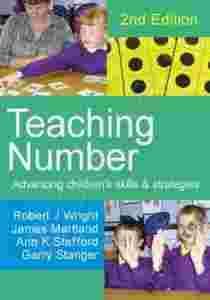|
The book lets teachers identify where their students
are in terms of number skills, and sets out a strategy
for developing their knowledge. The authors show how to
advance children's learning across five stages of early
arithmetical learning - emergent, perceptual,
figurative, initial number, and facile number. This
provides for increasingly sophisticated number
strategies across addition, subtraction, multiplication
and division, as well as developing children's number
word and numeral knowledge, and their ability to
structure number and have grouping strategies. The
approach used nine guiding principles for teaching. Each
chapter has clearly defined teaching procedures which
show how to take the children onto the next more
sophisticated stage.The teaching procedures are
organized into key teaching topics, and each includes: o
a clearly defined purpose o detailed instructions,
activites, learning tasks and reinforcing games o lists
of responses which children may make o application in
whole class, small group and individualised settings o a
link to the Learning Framework in Number (see Early
Numeracy- second edition, 2005) o how the guiding
principles for teaching can be used to allow teachers to
evaluate and reflect upon their practice Primary
practitioners in Australia, the United States, the
United Kingdom and Canada have tested the teaching
procedures which can be used in conjunction with each
country's numeracy strategy.Primary teachers, especially
of the early years, mathematics co-ordinators, heads of
school, mathematics advisers, special educationalists,
learning support personnel, teacher assistants,
lecturers in initial teacher training and educational
psychologists will all find this book invaluable. |
|

